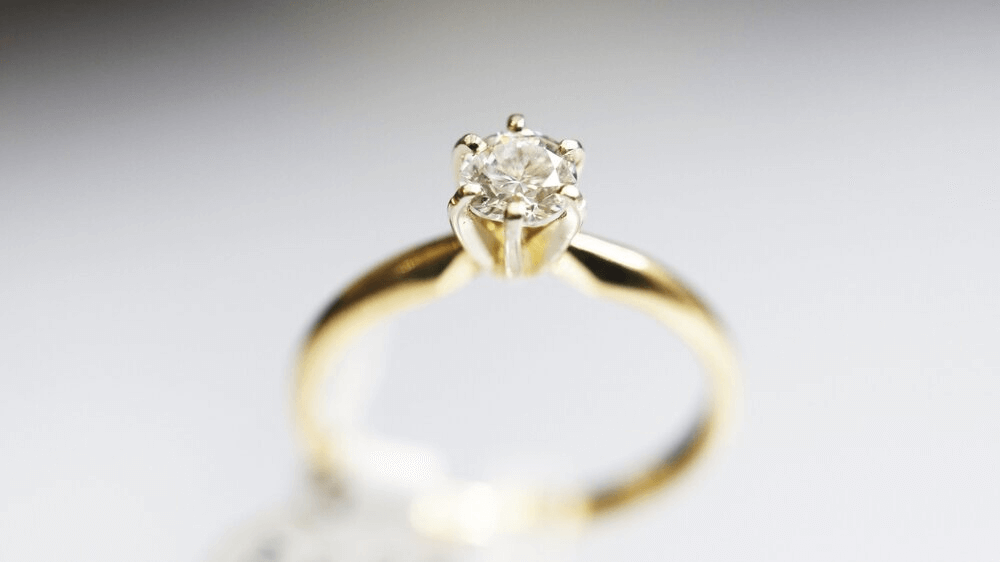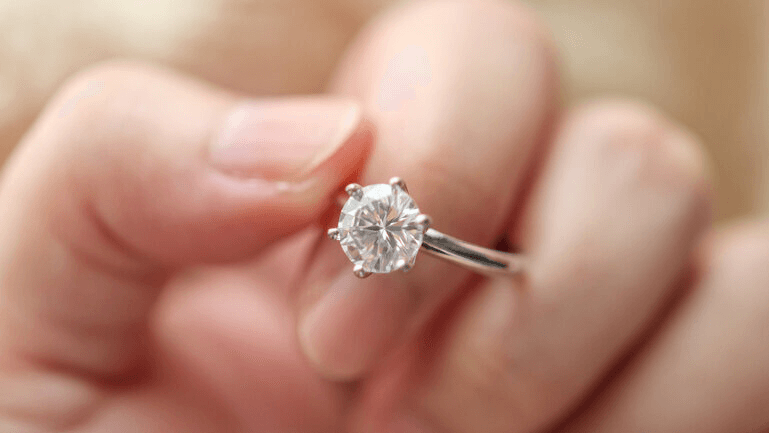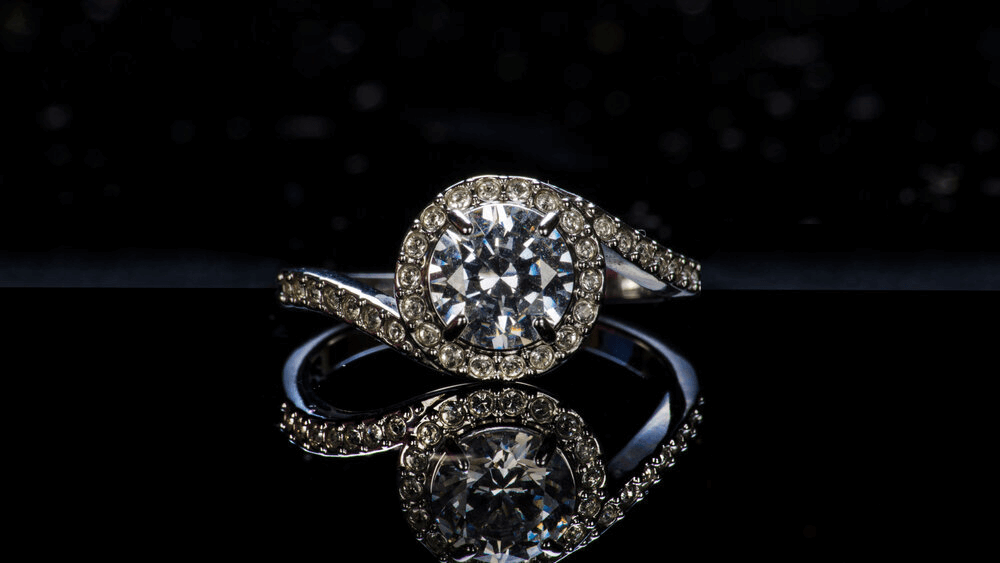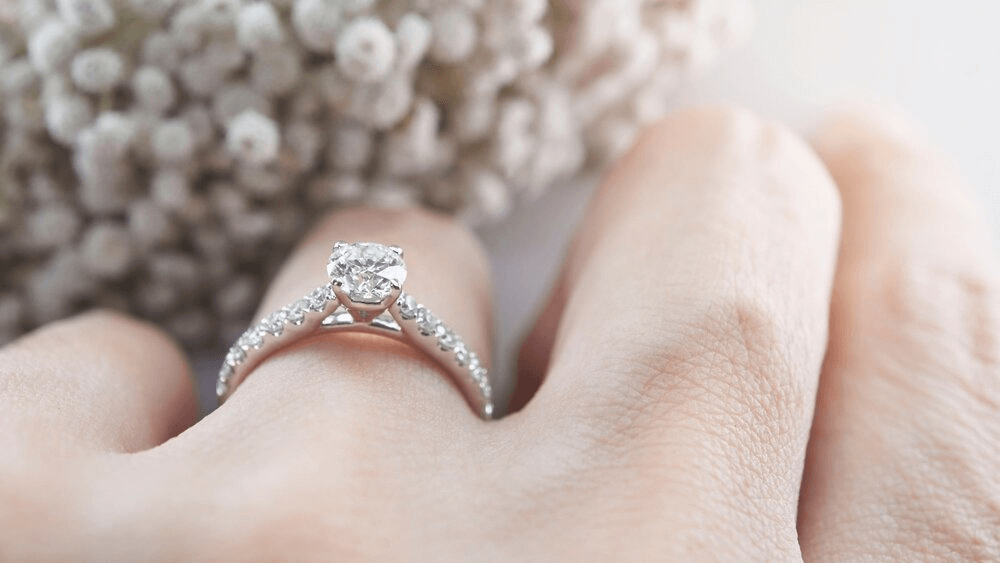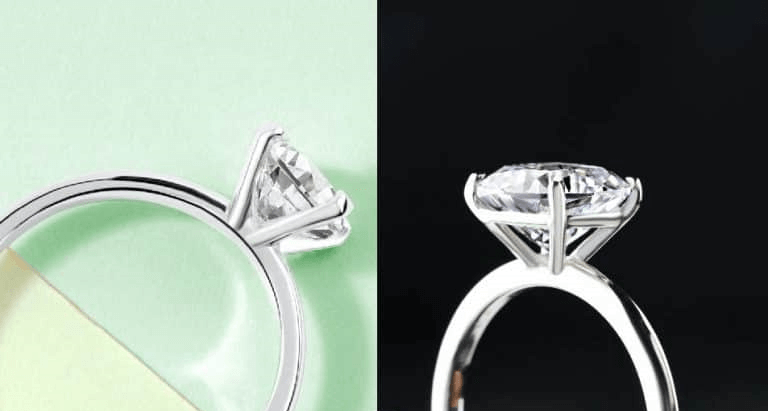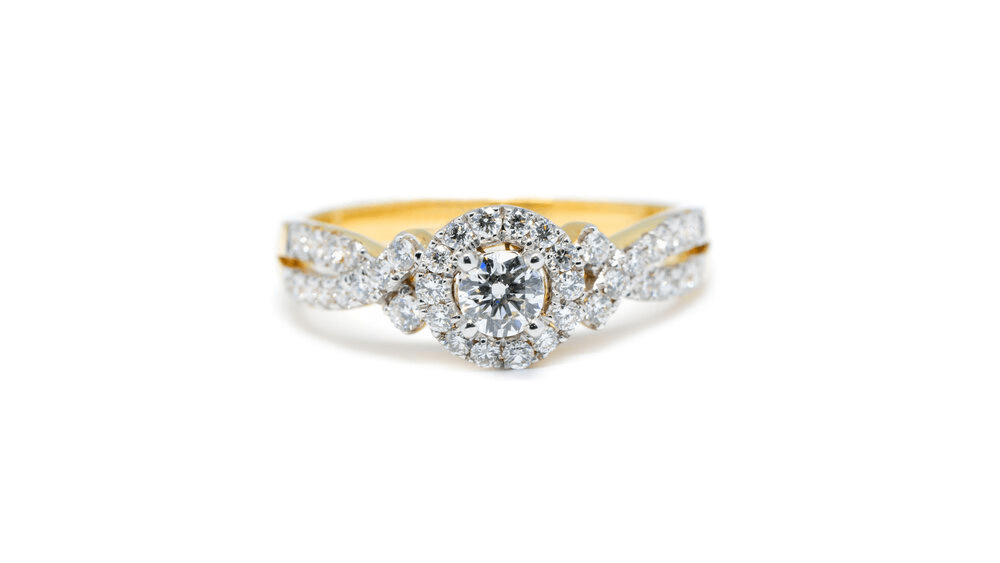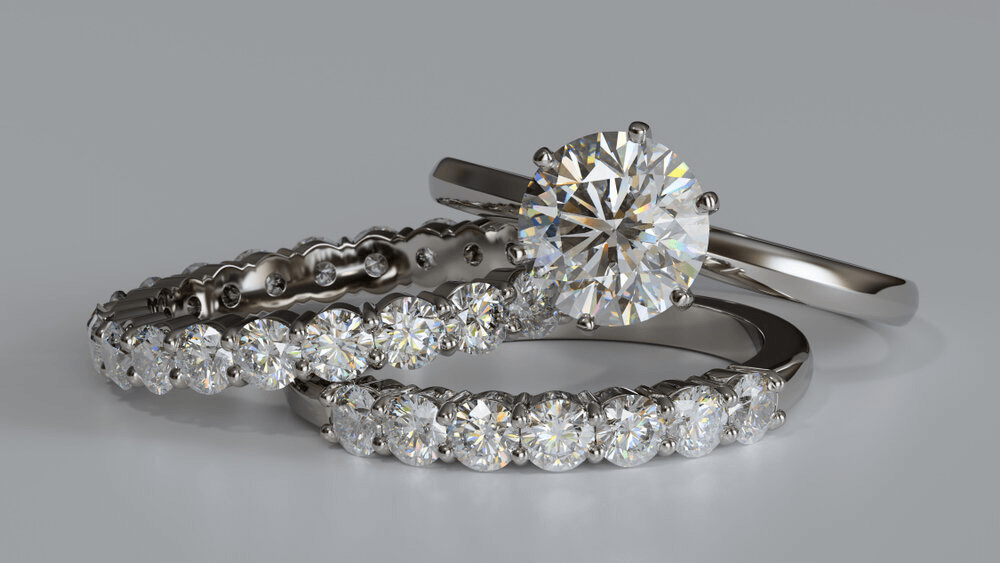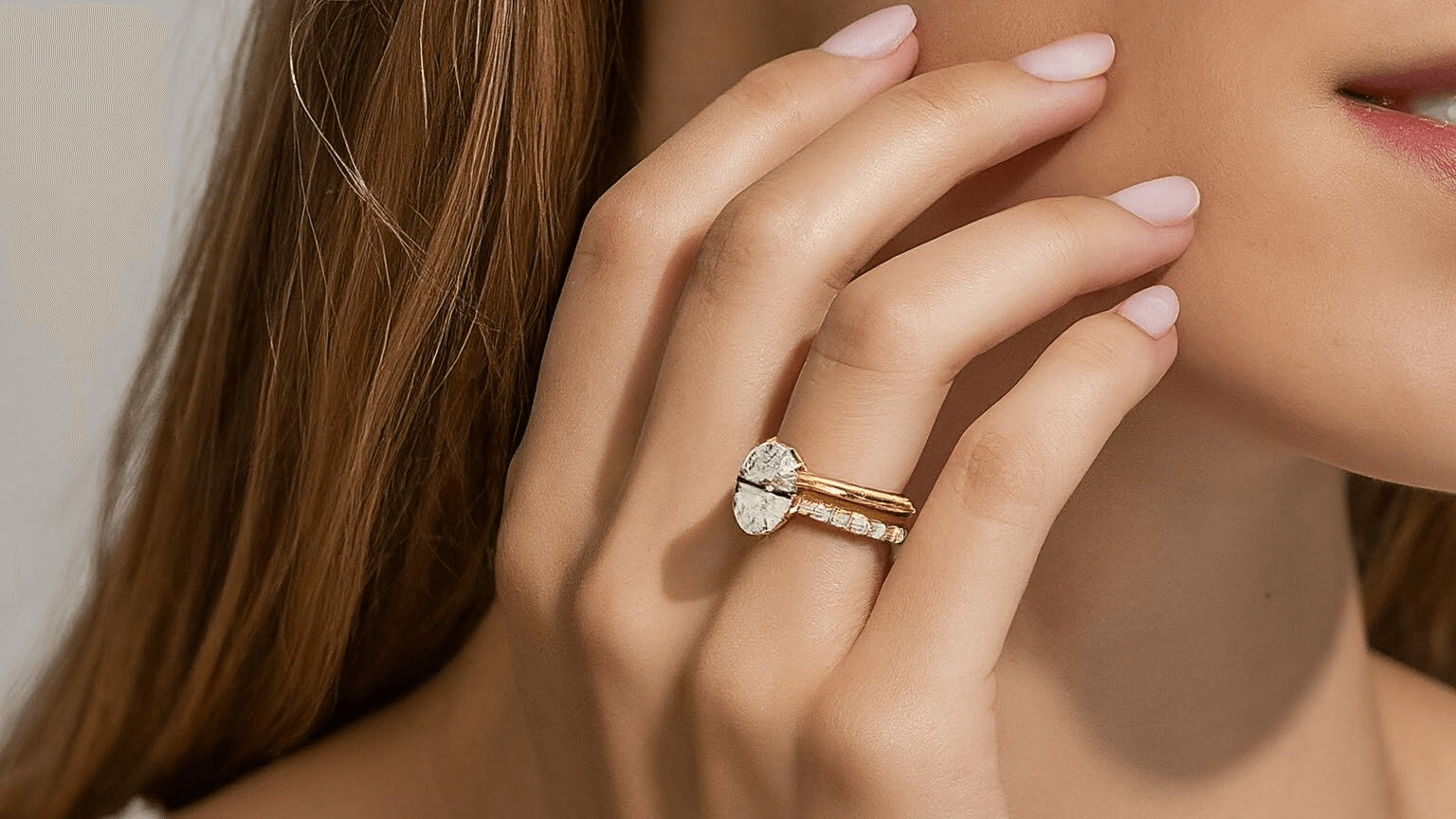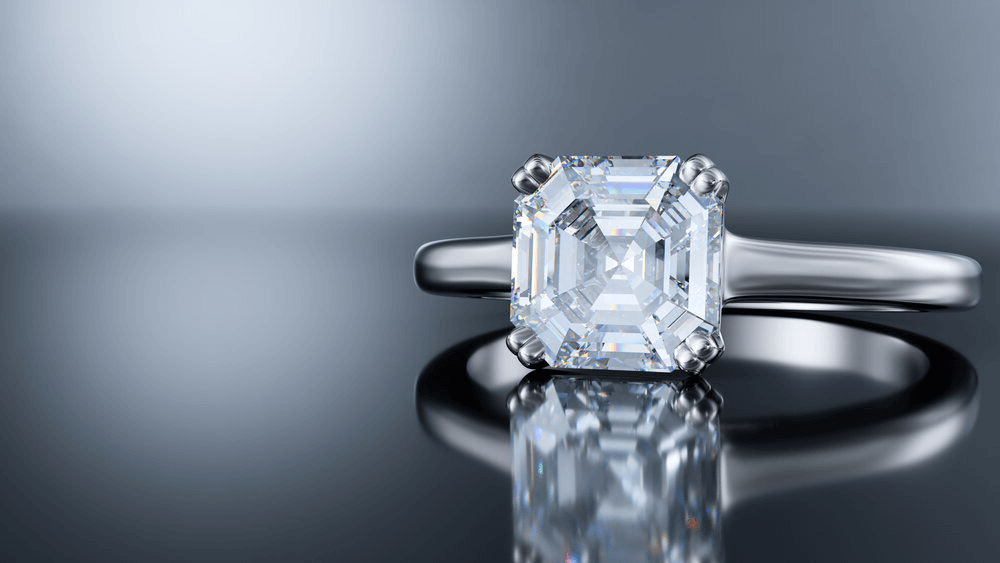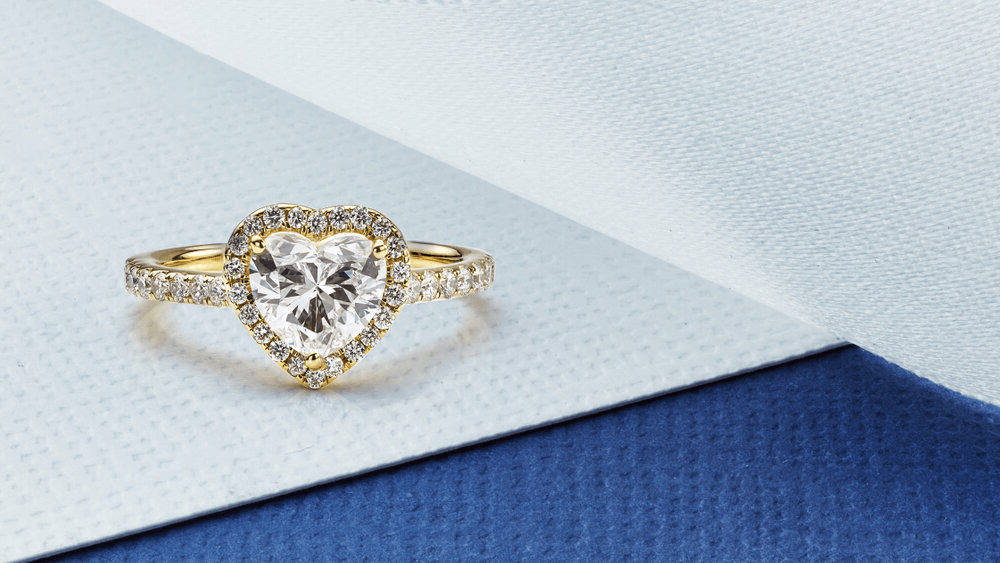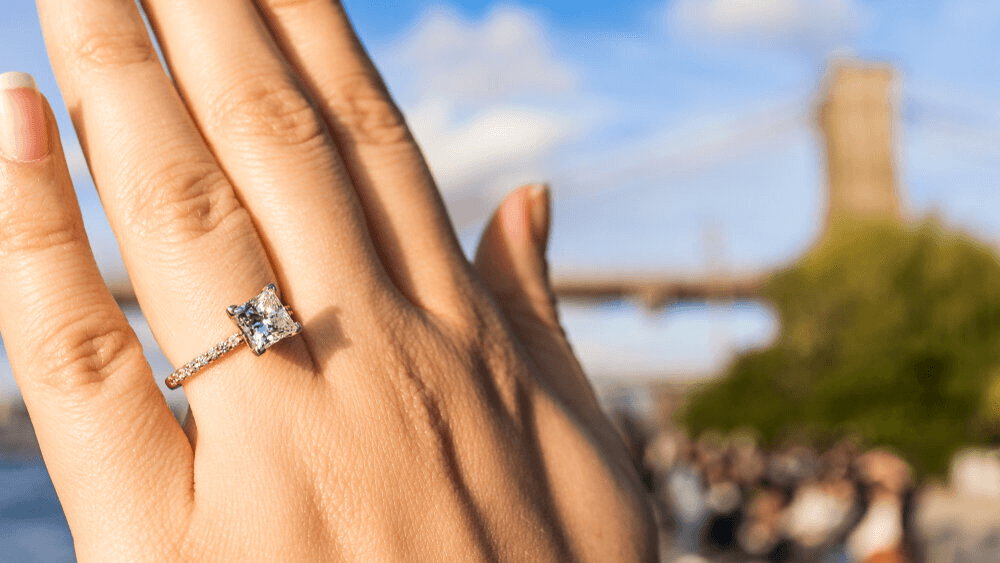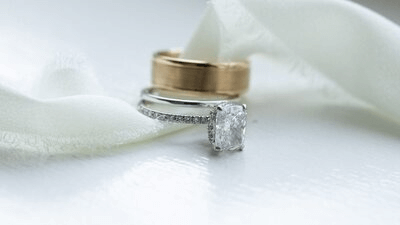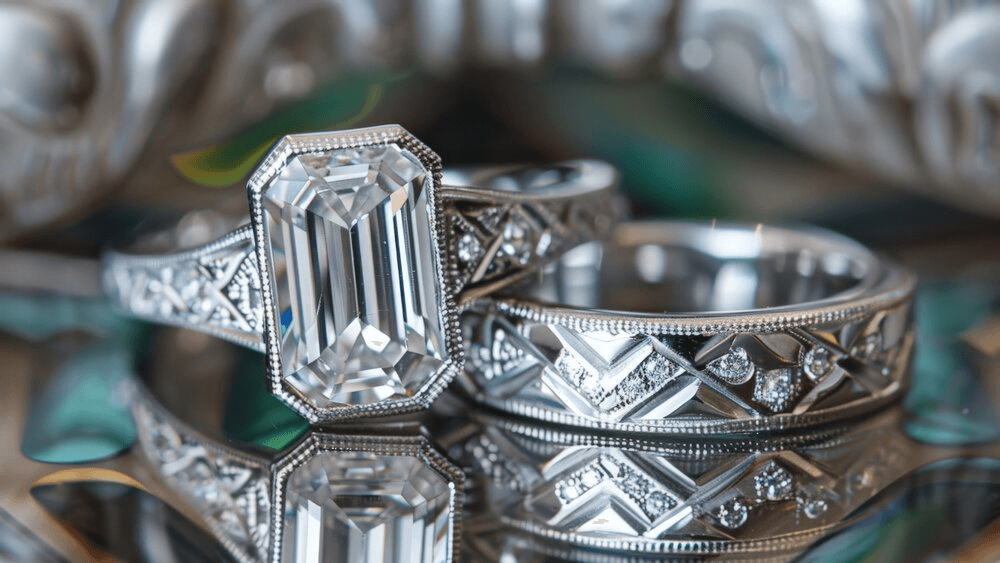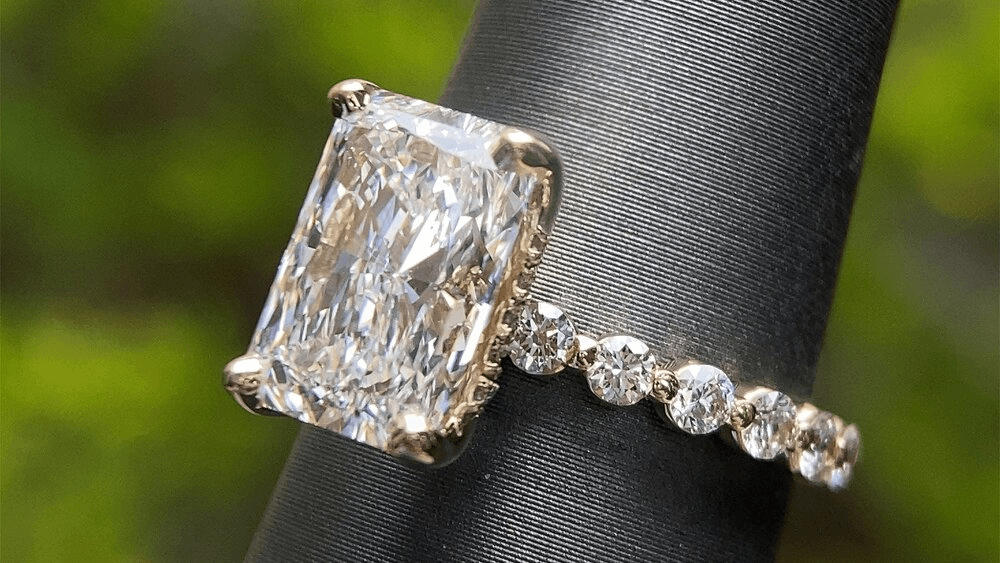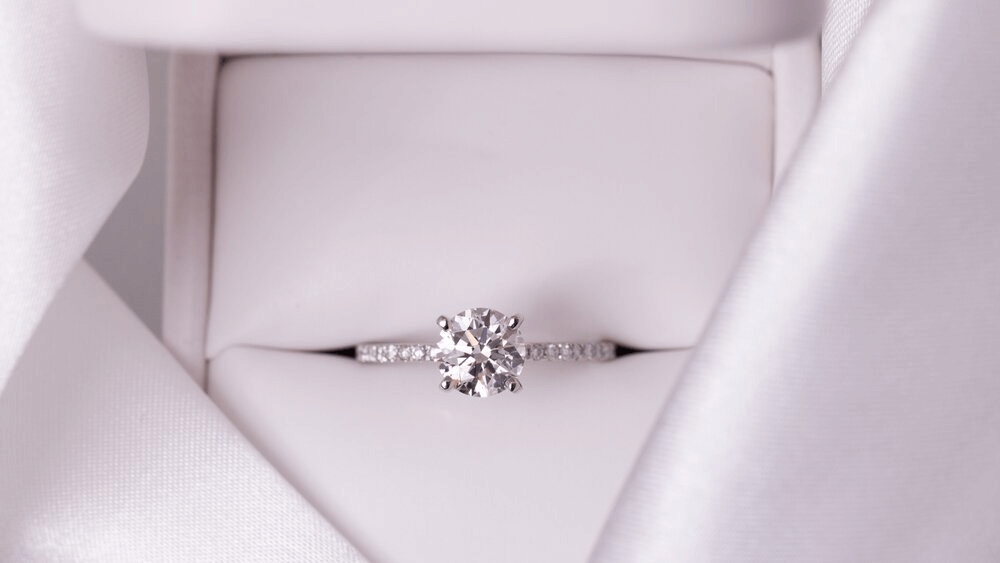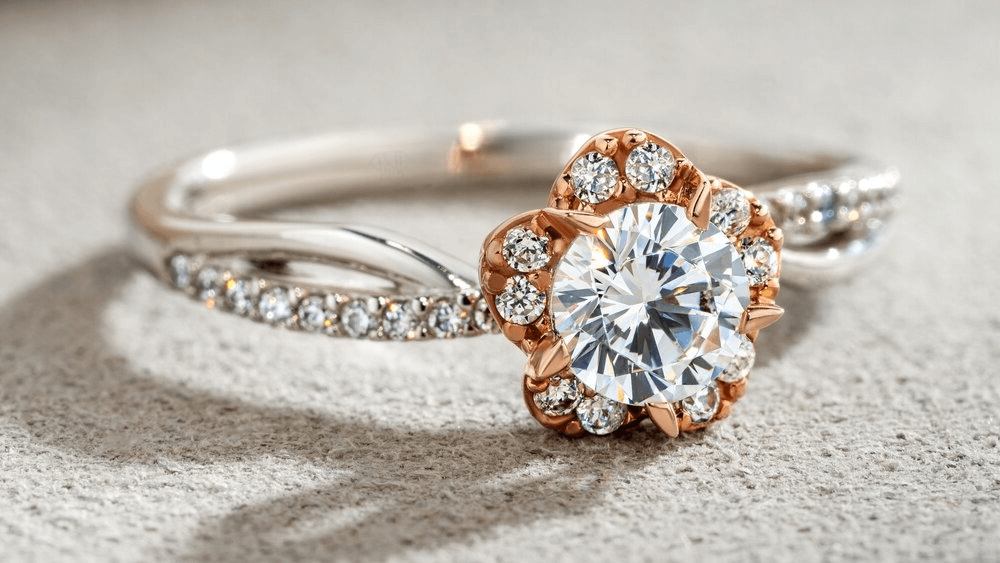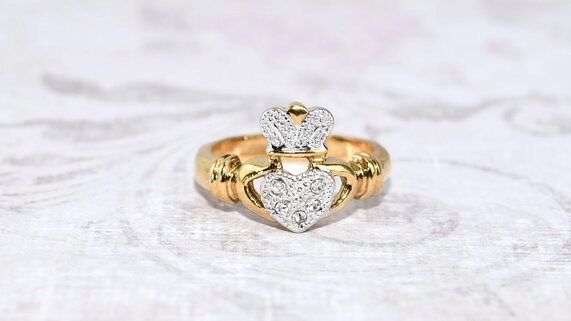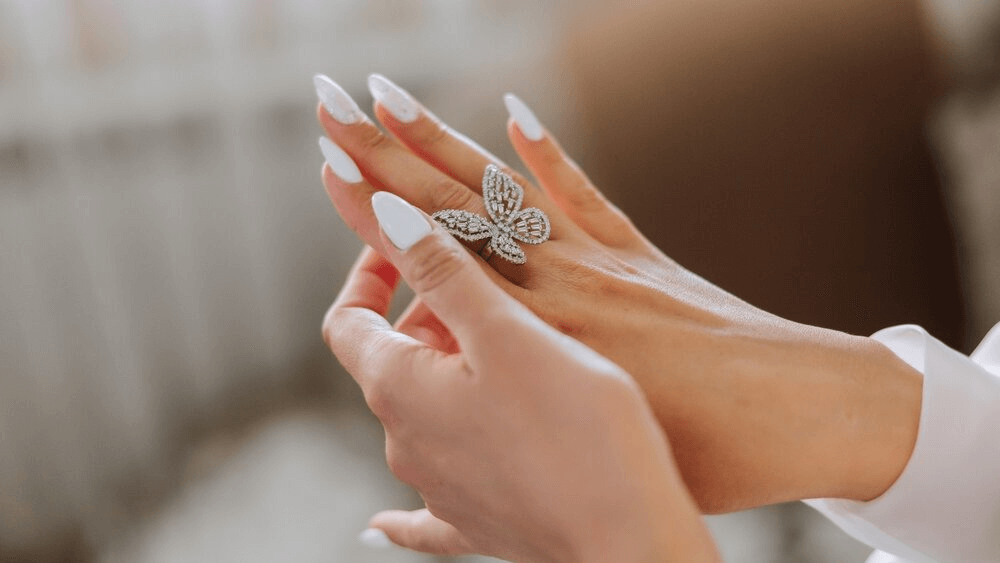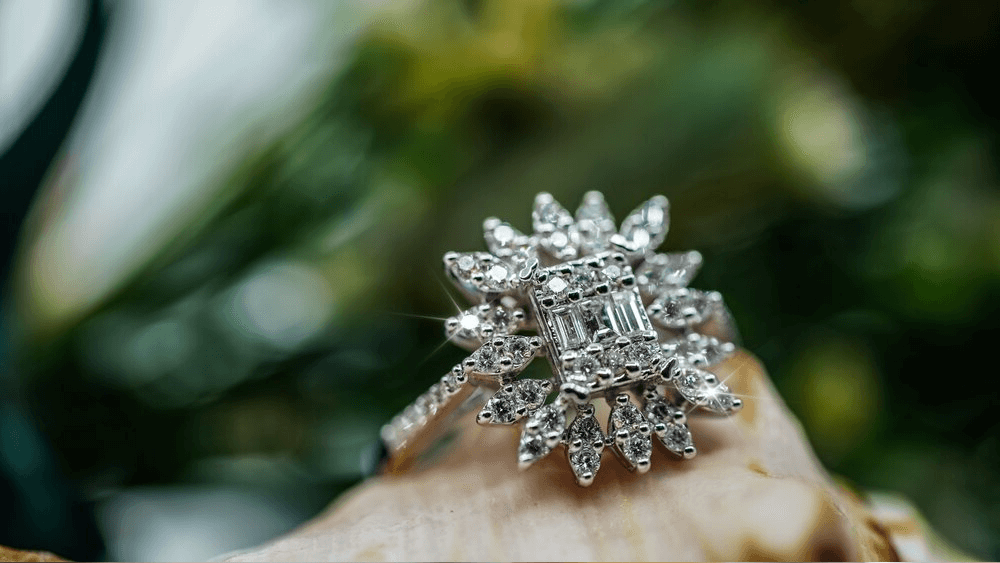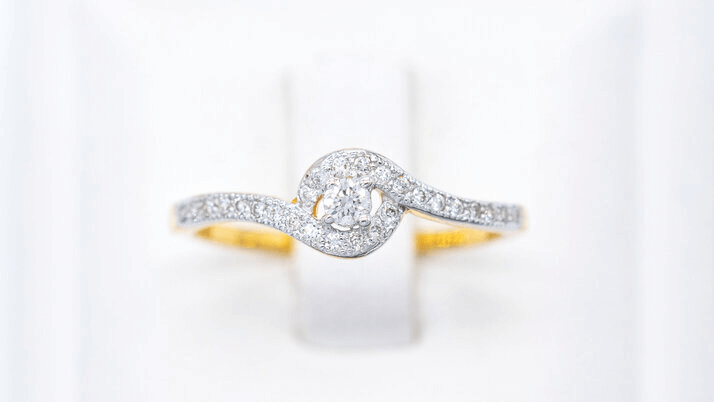Why Trellis Engagement Rings Are the Next Big Thing

By Gary A.

Edited by Olivia H.
Published Aug 8, 2024
Edited on Mar 31, 2025
Trellis engagement rings bring a perfect blend of elegance and craftsmanship, where interwoven prongs beautifully cradle the diamond—discover how this unique design elevates your engagement ring choice.

Navigate This Guide:
- 7 Quick Tips for Buying a Trellis Engagement Ring
- Introduction
- The Anatomy of a Trellis Setting
- Choosing the Perfect Diamond
- Design Variations and Customizations
- Comparing Trellis with Other Ring Settings
- Maintenance and Care Tips
- Our Expert Take
- 7 Frequently Asked Questions about Trellis Engagement Rings
Before we dive deeper into the specifics, here are some practical tips to help guide your decision-making process:
7 Quick Tips for Buying a Trellis Engagement Ring
When considering a Trellis Engagement Ring, it’s essential to focus on several key aspects to ensure you select a piece that’s both beautiful and durable. Here are practical tips to guide you through the process:
- Tip 1: Understand the Setting
- The Trellis Engagement Ring setting is known for its interwoven prongs that create a distinctive X shape from a side view. Familiarize yourself with this design’s unique features and how it stands out from other ring settings. This understanding will help you appreciate the craftsmanship and aesthetic appeal of the trellis design.
- Tip 2: Examine the Prongs for Security
- The hallmark of a trellis setting is its securely interlocking prongs that hold the diamond in place. When examining a ring, ensure that the prongs are well-crafted and offer a tight fit for the diamond, minimizing the risk of it becoming loose or falling out.
- Tip 3: Number of Prongs
- Trellis settings typically feature four prongs, but variations can include six or more for added security and a different look. Consider which option aligns with your aesthetic preference and the level of security you desire for your diamond.
- Tip 4: Check for Light Interaction
- One advantage of the trellis setting is its ability to allow ample light to interact with the diamond, enhancing its brilliance and fire. Make sure the setting you choose doesn’t impede light from entering the diamond, ensuring maximum sparkle.
- Tip 5: Consider Maintenance Requirements
- Due to the intricate nature of trellis settings, they can be more prone to collecting dirt and debris. Think about the maintenance and cleaning requirements of the ring. It may necessitate more frequent professional cleanings to maintain its shine and hygiene.
- Tip 6: Versatility with Diamond Shapes
- While trellis settings can accommodate a wide range of diamond shapes, it’s crucial to ensure that your chosen shape fits well within the setting and is held securely by the prongs. The right shape will not only complement the setting but also enhance the ring’s overall beauty.
- Tip 7: Personal Style and Embellishments
- Decide whether you prefer a simple trellis design or one embellished with additional diamonds, intricate metalwork, or filigree. It’s important that any added decorations enhance rather than detract from the main diamond and the ring’s design. Consider how these elements reflect your personal style and the overall aesthetic you wish to achieve with your engagement ring.
Now that you’ve got these practical tips, use Jeweler AI below to find the perfect engagement ring that suits your style and budget:
Introduction
You’ve heard of nature-inspired engagement rings, but have you thought about one that draws on the garden itself? A trellis engagement ring emulates a deceptively simple architectural feature that you’re probably used to seeing but never realized could take your solitaire from striking to stunning.
Here’s what you need to know about this design feature. No gardening tools are required…
The Anatomy of a Trellis Setting
A trellis setting features four prongs – just as you’d expect from a regular solitaire design. What’s different is the way in which they’re arranged. With a trellis setting, the ‘stems’ of those prongs cross over one another, creating a curved x-shape on either side of the central setting.
The overall effect is similar to the interlocking, cross-cross shape of a garden trellis. While, from above, the ring will look the same as a traditional solitaire,
Understanding the Interlocking Prongs
While the interlocking prongs are a relatively small, subtle way of changing up their traditional solitaire design, they can have a pretty big impact. From the side, they add more volume and intrigue without overburdening the centre stone with additional accent stones or intricate design elements like filigree.
In other words, it’s a great way to add intrigue without straying too Far from the realm of minimalist engagement rings. It’s timeless, versatile, and very effective.
The Significance of the X Shape
An X shape is literally the crossing of two separate pieces or strands. While it may not be as everlasting as an eternity symbol, an ‘x’ is still a beautiful and subtle representation of two parts permanently interwoven — a beautiful sentiment for an engagement ring.
Choosing the Perfect Diamond
As always, the visual quality of your diamond is essential. Whether you opt for a basic setting or an elaborate one, any noticeable flaws in your diamond will really undermine the ring’s beauty.
The Brilliance of the Right Cut
Diamonds need to be cut to a very high standard in order to ensure that the sparkle you expect from your investment will be there.
Rough stones don’t just sparkle on their own, it’s all about the strength of the faceting in terms of symmetry, proportion, and placement. These diamonds need to be well proportioned in order for light to be refracted as it needs to be, and they need to be polished to a very high standard, too.
We would never recommend anyone buys a diamond that doesn’t have, at minimum, a cut grade of very good. Excellent is, obviously, better, but both of these grades will represent safe options for shoppers. Any lower than that on the scale, and you’re risking your diamond’s light performance.
Read all about cut here.
Color and Clarity in Trellis Settings
Clarity and color are both important, but they are not as demanding of your wallet as Cut. In other words, you can save some money here. Even a basic trellis set solitaire, where the diamond is on full view without any other decorative elements ‘distracting’ from it (as much as you can distract from a diamond) won’t require you to go to the very high end of the color and clarity spectrums.
This guide gives you everything you need to know to make a strong decision about your diamond’s clarity.
Similarly, you can find our guide to color to ensure you don’t over (or under) spend.
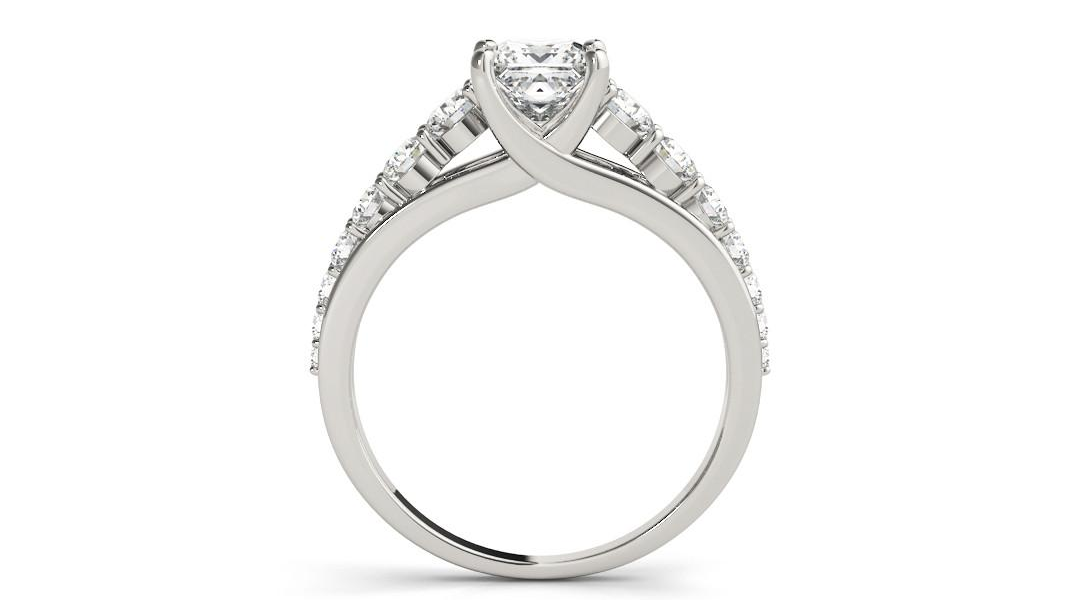
Design Variations and Customizations
While we’ve talked about the trellis ring design as a great way to elevate a classic solitaire design, it’s also a great feature for a wide range of other ring designs.
From Solitaire to Multi-Stone Masterpieces
Split shank trellis engagement rings are a great option, as jewelers can create one smooth, unbroken ‘sweep’ of metal per prong that connects with the shank. The effect is very structural, but with the organic curve that makes the trellis so versatile.
You can also find rings that pair a trellis setting with a halo, a bezel setting, pavé, or a hidden halo.
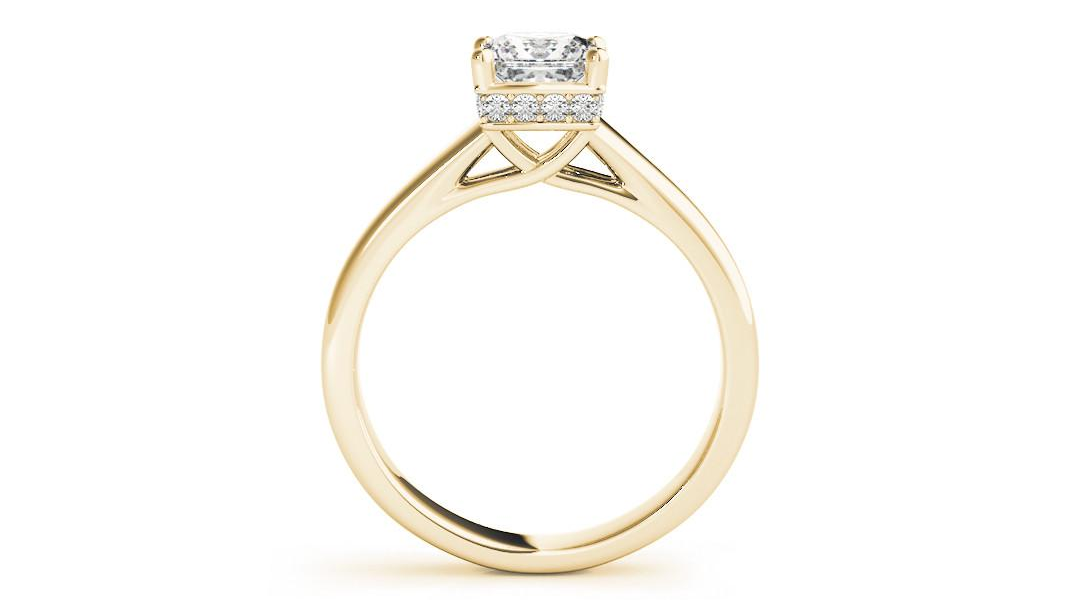
Incorporating more than one stone into the design is a very effective way of boosting light performance. Since those other stones will probably be significantly smaller than the center stone, you won’t find that the ring bombards you with visual elements; instead, the center stone will attract most of the attention, while the accent stones will provide a pretty ‘glitter’ in the background.
These accent stones pair very well with the sweeping architecture of the trellis design.
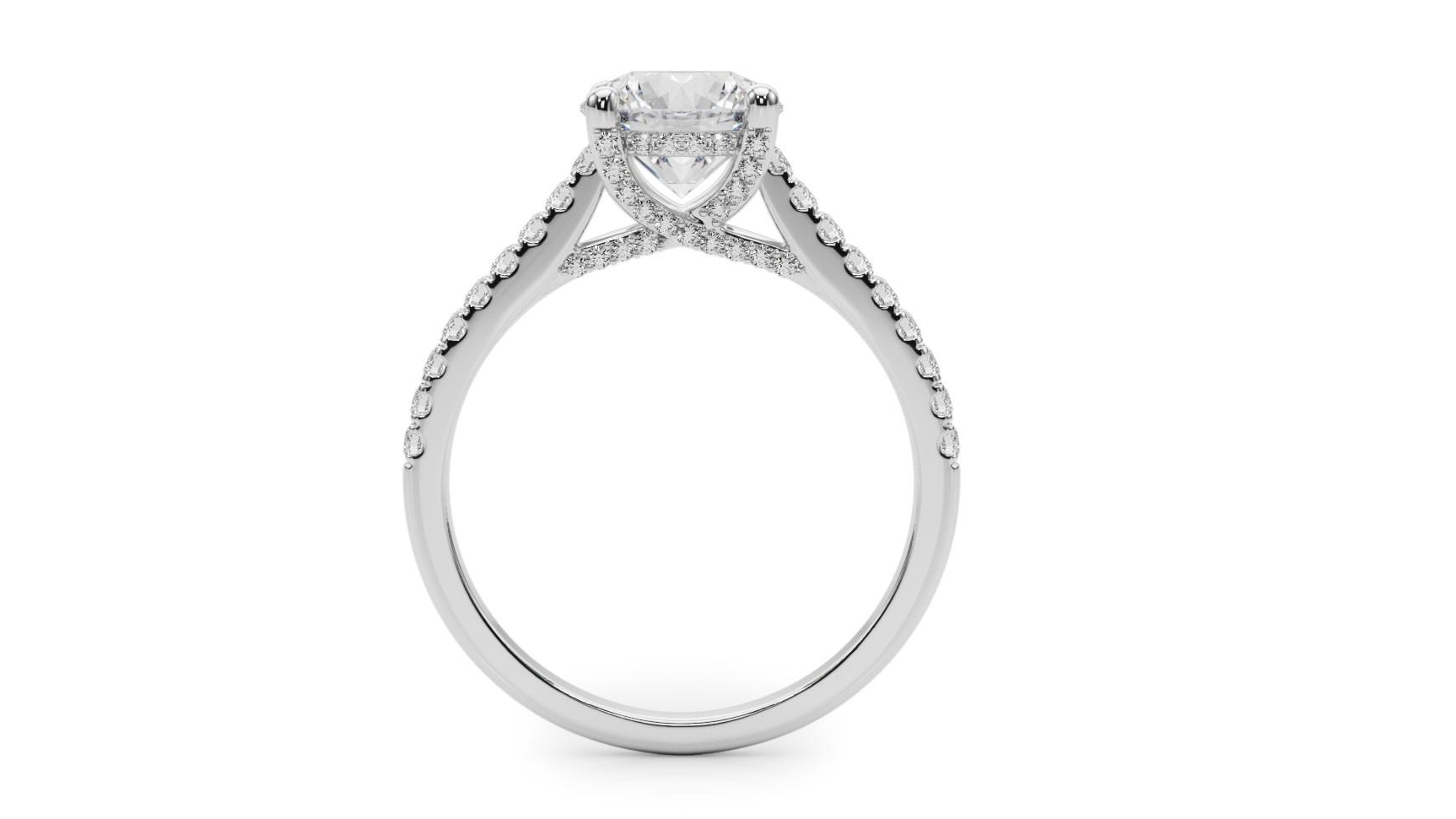
Adding Personal Touches with Embellishments
The additional metalwork provided by the trellis also creates an extra space for adding a personal touch like an engraving, or some extra filigree work.
Read our full guide to engraving your engagement ring – including what to say – here.
Comparing Trellis with Other Ring Settings
Small decisions have a big impact, particularly when it comes to an engagement ring design…
Trellis vs. Prong
The difference between these two designs is subtle. In general, you will only be able to identify a traditional prong or trellis engagement ring by viewing it from this side. However, rings are very rarely viewed from directly above. There are plenty of times when you will be admiring your ring from an angle. The trellis simply adds an additional element – an extra point of intrigue.
Now, if minimalism is the name of your game, and you really want to create a ring with a strong though subtle architecture that elevates the diamond and intrudes as little as possible, a traditional prong style is the best option. But a lot of people, even when creating simple designs, want a few extra elements to make the design unique, and a trellis is a great option for that.
Our opinion? Unless you’re 100% committed to minimalism-at-all-costs, go for the trellis. It’s not the sort of design decision you regret.
Trellis vs. Cathedral
The trellis and cathedral are very similar in terms of what they provide to the ring’s profile: an architectural, strong base that rises the diamond high above the band, and really elevates that side view. The key difference between the two is that, while the prongs of the trellis cross one another, the prongs of a cathedral setting create an arch shape instead, without any cross between the lines.
It all comes down to personal preference here. They’re similar but, if you’ve got a favorite, worlds apart in terms of vibe and appeal.
Maintenance and Care Tips
The same rules apply for trellis engagement rings as any other engagement ring. Be sensible, avoid unnecessary strains, knocks, scrapes, and bumps, and give the ring a soak every now and then in warm, mildly soapy water to stop any build-up of dirt, oil, or dust.
Our full guide to engagement ring maintenance will give you everything you need to know to keep your trellis ring sparkling.
Our Expert Take
A trellis is a strong, subtle architectural feature to choose for your engagement ring. It won’t overwhelm the design with a sense of maximalism; instead, it’ll add extra intrigue and appeal most noticeable when the ring is viewed from the side – or, at the very least, not from directly overhead. We love this design feature, and it’s perfect for anyone worried that a classic solitaire is just a little too plain.
7 Frequently Asked Questions about Trellis Engagement Rings
- Q: What makes a trellis engagement ring different from other ring settings?
- A: A trellis engagement ring is characterized by its interwoven prongs that cross over each other to securely hold the diamond. This design creates a distinctive X shape when viewed from the side, offering a unique aesthetic compared to traditional prong settings.
- Q: How many prongs do trellis engagement rings typically have?
- A: Trellis engagement rings commonly feature four prongs, but they can also be designed with six or more prongs for increased security and a different visual appeal.
- Q: Are trellis engagement rings more expensive than other settings?
- A: The cost of a trellis engagement ring can vary depending on factors like metal type, diamond size, and the complexity of the design. While the intricate craftsmanship may sometimes lead to a higher price, trellis settings are available across a wide range of budgets.
- Q: Can trellis settings accommodate different diamond shapes?
- A: Yes, trellis settings are versatile and can accommodate a variety of diamond shapes, from round and princess to oval and marquise. It’s important to ensure that the chosen shape fits well within the trellis setting for both aesthetic and security reasons.
- Q: Is a trellis engagement ring suitable for everyday wear?
- A: Trellis engagement rings are designed to be durable and secure for everyday wear. However, the intricate design may require more careful maintenance and cleaning to prevent dirt buildup in the crevices of the setting.
- Q: How do I clean a trellis engagement ring?
- A: Trellis engagement rings can be cleaned using warm soapy water and a soft-bristled brush to gently remove dirt and debris from the intricate setting. It’s advisable to have the ring professionally cleaned periodically to maintain its sparkle.
- Q: Can I customize a trellis engagement ring?
- A: Absolutely! Trellis engagement rings can be customized with various diamond shapes, types of metal, and additional embellishments such as accent diamonds or detailed metalwork. Customization allows you to create a ring that truly reflects personal style and preferences.
Discover Your Perfect Ring with Jeweler AI – Unveil the beauty of tailored Trellis Engagement Rings that resonate with your love story.
FOLLOW-UP GUIDE SERIES





